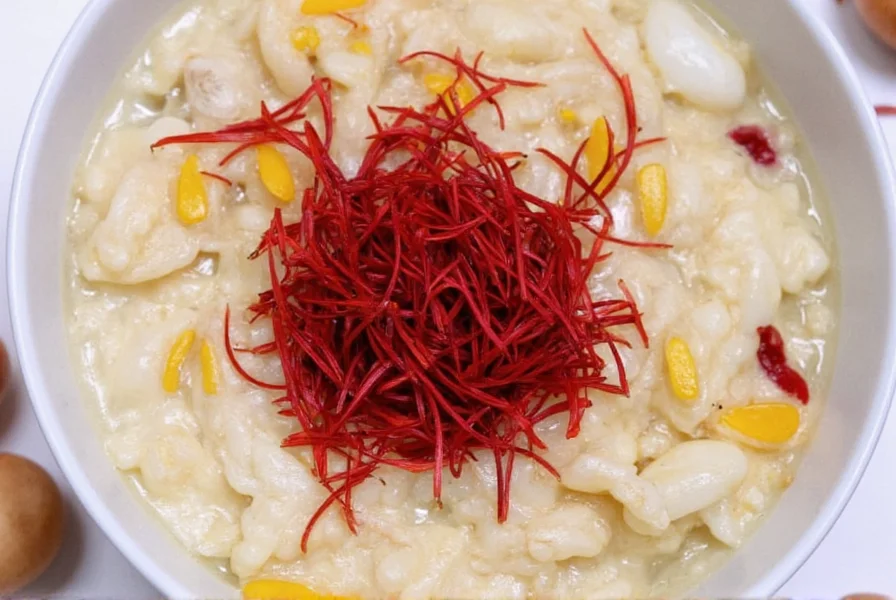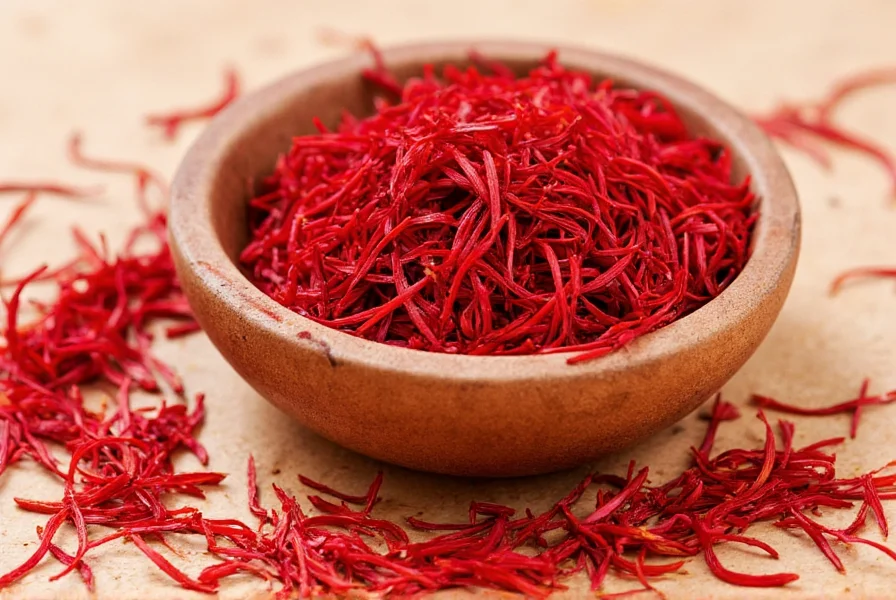Many people searching for "saffron thai" expect to find information about saffron's role in Thai cooking. This common misconception stems from visual similarities between saffron and turmeric, a staple in Thai cuisine that provides vibrant yellow color to dishes like kaeng kari (Thai yellow curry). Understanding the distinction between these spices is essential for authentic Thai cooking and appreciating Thailand's unique culinary traditions.
Why Saffron Isn't Part of Traditional Thai Cuisine
Thailand's spice profile developed based on locally available ingredients and historical trade routes. While saffron (Crocus sativus) originates from Southwest Asia and became prominent in Persian, Indian, and Mediterranean cuisines, Thai cooking evolved with different botanical resources. The country's tropical climate doesn't support saffron cultivation, which requires specific temperate conditions.
Turmeric (Curcuma longa), not saffron, provides the characteristic yellow hue in many Thai dishes. This rhizome grows abundantly in Southeast Asia and has been integral to Thai cooking for centuries. The confusion between these spices often occurs because both produce yellow coloring, but their flavor profiles, costs, and culinary applications differ significantly.
Common Misconceptions About Saffron Thai Dishes
Several factors contribute to the "saffron thai" misconception:
- Visual confusion: Turmeric's golden color resembles saffron's hue, leading to mistaken identification
- Menu terminology: Some Western Thai restaurants use "saffron" in dish names for marketing appeal
- Cultural blending: Modern fusion cuisine sometimes incorporates saffron into Thai-inspired dishes
- Translation issues: Some Thai spice names get mistranslated as "saffron" in English menus
| Characteristic | Saffron | Turmeric (Used in Thai Cooking) |
|---|---|---|
| Origin | Mediterranean/Southwest Asia | Southeast Asia |
| Cost | Extremely expensive (world's costliest spice) | Affordable and widely available |
| Flavor Profile | Floral, honey-like, slightly bitter | Earthy, slightly bitter, peppery |
| Thai Dish Examples | None in traditional cuisine | Yellow curry, som tum (papaya salad), tom kha gai |
| Culinary Role | Rarely used in Southeast Asia | Essential flavor and color component |
Authentic Spices in Thai Cooking
Traditional Thai cuisine relies on a distinctive spice palette that creates its signature balance of sweet, sour, salty, bitter, and spicy flavors. Key ingredients include:
- Lemongrass: Provides citrus notes in soups and curries
- Galangal: A ginger relative with sharper, pine-like flavor
- Kaffir lime leaves: Contribute distinctive floral-citrus aroma
- Shallots and garlic: Form the flavor base for many dishes
- Chilies: Provide heat in varying intensities depending on region
- Turmeric: Creates yellow color in southern Thai curries
These ingredients grow abundantly in Thailand's climate and have shaped the country's culinary identity for generations. When exploring traditional Thai cooking techniques, understanding these core spices is far more valuable than searching for non-existent saffron applications.
When You Might Find Saffron in Thai Restaurants
While absent from Thailand's culinary heritage, saffron occasionally appears in:
- Modern fusion restaurants: Chefs experimenting with cross-cultural combinations
- Upscale dining establishments: Creating premium versions of Thai-inspired dishes
- International hotel restaurants: Catering to Western expectations of "exotic" cuisine
- Special occasion menus: Limited-time offerings blending Thai and Middle Eastern elements
If you're searching for authentic Thai restaurant saffron dishes, you're likely to be disappointed at traditional establishments. However, some innovative chefs create interesting fusions like saffron-infused coconut rice or saffron seafood curry that blend elements from different culinary traditions.
Practical Advice for Cooking Thai Food
For those interested in making traditional Thai food at home, focus on acquiring these essential ingredients instead of searching for saffron:
- Fresh lemongrass (or frozen)
- Dried red chilies (prik haeng)
- Fish sauce (nam pla)
- Palm sugar
- Fresh galangal (or frozen)
- Kaffir lime leaves (fresh or frozen)
When following recipes, be cautious of Westernized versions that substitute ingredients. Authentic Thai curry paste ingredients never include saffron, though some modern recipes might suggest it as a coloring agent. Turmeric, shrimp paste, and chilies provide the characteristic colors in traditional curry pastes.

Understanding Thai Cuisine Beyond the Saffron Myth
Thailand's culinary tradition is rich and diverse, with regional variations that reflect different cultural influences. Northern Thai cuisine shows Burmese influences, while Southern Thai cooking incorporates Malay elements. Central Thai food, often considered the "standard" internationally, balances flavors with precision.
The persistence of the saffron in Thai food misconception highlights how culinary traditions can become distorted as they travel internationally. When exploring traditional Thai spice combinations, focusing on the actual ingredients used in Thailand provides a more authentic experience than searching for non-existent saffron applications.

Conclusion
The search for "saffron thai" typically leads to confusion rather than authentic culinary knowledge. By understanding that saffron plays no role in Thailand's culinary heritage, food enthusiasts can better appreciate the actual spices that define Thai cooking. When exploring Thai cuisine spice guide resources, prioritize information about locally grown ingredients that have shaped Thailand's food culture for centuries.
Frequently Asked Questions
Does traditional Thai cooking use saffron?
No, traditional Thai cooking does not use saffron. Turmeric provides the yellow color in dishes like Thai yellow curry, while saffron is neither traditional nor commonly available in Thailand due to its high cost and unsuitable growing conditions.
Why do people think saffron is used in Thai food?
The confusion stems from visual similarities between saffron and turmeric, which gives Thai yellow curry its color. Some Western restaurants also use "saffron" in dish names for marketing appeal, despite not using the actual spice in authentic preparations.
What spice gives Thai yellow curry its color?
Turmeric is the primary spice that gives Thai yellow curry (kaeng kari) its distinctive color. This rhizome grows abundantly in Southeast Asia and has been used in Thai cooking for centuries, unlike saffron which is not part of Thailand's culinary heritage.
Can I substitute saffron for turmeric in Thai recipes?
While technically possible, substituting saffron for turmeric will dramatically alter both flavor and cost. Saffron has a floral, honey-like taste compared to turmeric's earthy profile, and costs approximately 100 times more. Authentic Thai recipes rely on turmeric's specific flavor profile, so substitution isn't recommended for traditional dishes.
Are there any Thai dishes that use saffron in modern cuisine?
Some contemporary fusion restaurants create innovative dishes blending Thai and Middle Eastern elements, occasionally incorporating saffron. However, these are modern interpretations rather than traditional Thai cuisine. You won't find saffron in authentic Thai recipes from Thailand.











 浙公网安备
33010002000092号
浙公网安备
33010002000092号 浙B2-20120091-4
浙B2-20120091-4